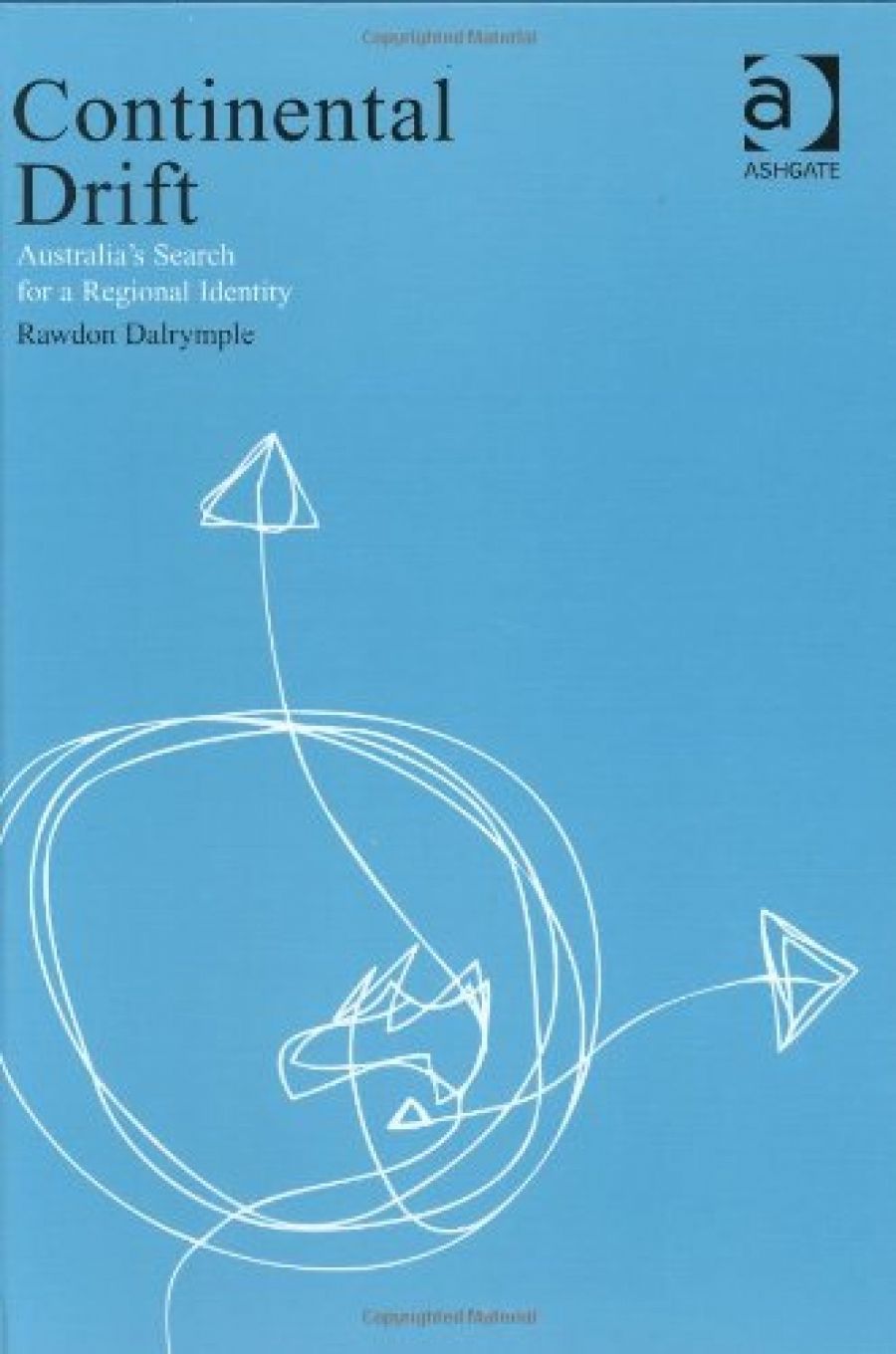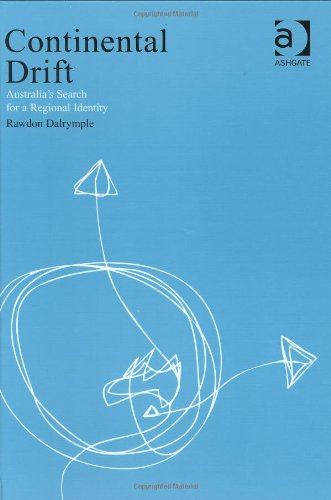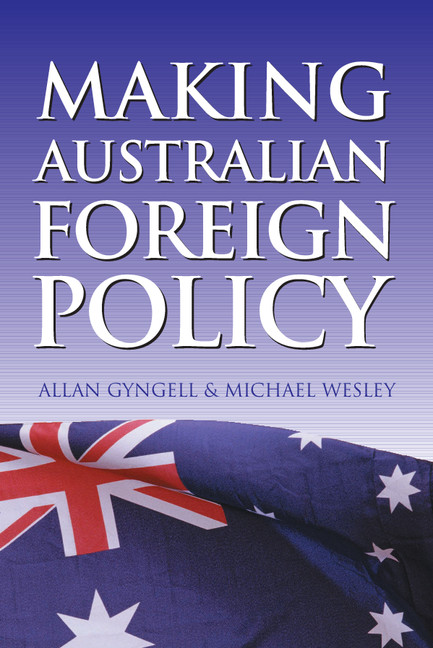
- Free Article: No
- Contents Category: Politics
- Review Article: Yes
- Article Title: Tensions in the Neighbourhood
- Online Only: No
- Custom Highlight Text:
John Burton, Walter Crocker, Paul Hasluck, Gregory Clark, Burce Grant, James Dunn, Alan Renouf, Stuart Harris, Richard Woolcott, and Alison and Richard Broinowski are all former diplomats who have written (or are writing) about foreign policy and Australia’s regional and global engagements. Two of the authors reviewed here – Rawdon Dalrymple and Allan Gyngell – can be included in the list. Dalrymple had a distinguished career as an Australian ambassador in countries as diverse as Indonesia, Japan and the US. He spent his immediate post-retirement years as a visiting professor in the University of Sydney. Gyngell has worked at the coalface of Australian foreign affairs for many years. He was recently appointed founding Executive Director of the Lowy Institute for International Policy, the most positive sign on the foreign policy analysis horizon for a long time.
- Book 1 Title: Continental Drift
- Book 1 Subtitle: Australia's search for a regional identity
- Book 1 Biblio: Ashgate, $138 hb, 243 pp
- Book 1 Cover Small (400 x 600):

- Book 1 Cover (800 x 1200):

- Book 2 Title: Making Australian Foreign Policy
- Book 2 Biblio: Cambridge University Press, $46.95 hb, 289 pp
- Book 2 Cover Small (400 x 600):

- Book 2 Cover (800 x 1200):

Michael Wesley, on the other hand, is a respected and theoretically informed International Relations academic, an appointment that very likely disqualifies him from the practice of Australian diplomacy, at least in the current political climate in this country.
Dalrymple’s book is an exercise in thoughtful restraint. It provides an updated overview of the evolution of Australian foreign policy. In this respect, Continental Drift is a worthy successor to Sir Alan Watt’s seminal and equally conservative The Evolution of Australian Foreign Policy (1960). Dalrymple charts Australia’s steady and unoriginal development as a player on the global stage. This development has seen the country forever riding on (or clinging to, or hiding beneath) the coat tails of ‘great and powerful friends’ – the UK until 1942, the US thereafter. It is a ride that Australians are loath, or too paranoid, to forfeit.
Despite the son et lumière of the Whitlam years and Malcolm Fraser’s ‘sense of solidarity with the Third World of developing and largely non-aligned states’, the old theme of dependence has persisted right through our foreign policy making. Whitlam recognised China in 1973 and talked a great deal about a more robustly independent Australian presence in the world. Fraser crafted a diplomatic niche for Australia on issues such as Zimbabwe, and started building a more practical – if awkward – engagement with Asia. Though an unreconstructed Americanophile (e.g., his enthusiasm for George Bush Senior’s 1991 Gulf War), Bob Hawke pushed ahead in seeking a greater ‘enmeshment’ of Australia within the Asia–Pacific region – the policy of ‘constructive engagement’. He was profoundly influenced by the Garnaut Report on Australia’s rapidly growing trade with East Asia, highlighting ‘the complementarity of Australia’s economy with those of North East Asia already demonstrated by the growth of Australia’s exports to the region’. Arguably the most original, if somewhat quixotic, foreign minister the country has had, Gareth Evans developed a leadership role for Australia – one that saw us punching above our weight on issues such as Cambodia and United Nations reform.
But ‘fault lines’ were even then spidering right through the new Asian engagement strategies. A severe lack of ‘Asia literacy’ in Australia – a wilful, stupid, ignorance –seriously constrains our capacities to trade and discourse intelligently in the region. It has resulted in Australia being easily misunderstood and malevolently misinterpreted in Asia – for example, by the ‘recalcitrant’ Dr Mahathir, Islamist extremists and authoritarian leaders in Indonesia. As Alison Broinowski has recently shown, we routinely set ourselves up as a favourite whipping boy for Asian ideologues who want to attack ‘the West’ without offending the US and Europe too much – especially when we take on the absurd pretence of being the US’s ‘deputy sheriff’ in the region. Within Australia, ‘Asia’ remains a dangerously schizophrenic imagining: as a trade cornucopia, yet simultaneously evoking pathologically populist responses – stark evidence of deep cultural immaturity.
The bitterest test of engagement has been Indonesia. This case shows how ignorance among the Australian public, blinkered realism and shallow pragmatism among policy makers and bureaucrats, and vindictive anti-Australian sentiments among groups such as the TNI in Indonesia conspire to convolute and confuse an absolutely vital diplomatic relationship. There is a tension in Dalrymple’s writing here. He is at once the former ambassador yet also the would-be professor, arguing a case as both an insider and a detached observer. This highlights the deepest flaw in this otherwise valuable volume. Insider insights are mostly suppressed in favour of academic conceit. This weakens the argument. A full-blooded memoir is needed, but what we are given is yet another tepid and orthodox explanation of successive governments’ attempts to keep the likes of Suharto on side. Pragmatism rules; principle is the victim of realpolitik, yet again.
The East Timor case is given a special chapter, as it deserves. Dalrymple aims for scholarly balance, but mostly achieves it at the expense of the insider’s experience. While it represents one of the more cogent accounts of a dreadful moment in Australia’s relations with Indonesia, the account we are given is lukewarm and disengaged. Those wanting to augment this account should read Richard Woolcott’s rather franker version of the events. The conclusions are similar, but Woolcott gives us an insider’s account.
Despite the book’s undoubted erudition, there is a serious problem with Dalrymple’s notion of ‘regional identity’. The author is at one with the self-defeating view that Australia is not an Asian country. This begs the vastly important question: what is Asia? Even so, Dalrymple concludes that in recent years ‘Australia still seems to be reacting against the earlier attempts to engage much more closely with East Asia, and to be drifting rather aimlessly with only a firm commitment to the United States alliance and leadership as the main determinant of policy’. This judgment, by one of our most experienced and scholarly diplomats, should be sounding alarm signals all over thoughtful Australia.
In Making Australian Foreign Policy, Gyngell and Wesley marry theory and practice sublimely. While it merits a much wider readership, it is destined to become the text for students of foreign policy and for trainee diplomats and managers of Australia’s overseas trade, commerce and security responsibilities. The book provides lucid accounts of the foreign policy processes in Australia, demystifying and informing as it goes. The account of the foreign affairs bureaucracy is vividly backed up by a case study on the Cambodian peace settlement. The role of the Executive is illustrated by a study of the organisations of APEC leaders’ meetings. The chapter on the intelligence community is backed by a study of the Bali bombings. This is augmented by the results of a detailed questionnaire sent to 800 DFAT officers serving in Australia and overseas. The authors note: ‘Policy failures or misjudgements are often blamed on policy-makers’ preconceptions or prejudices: yet […] these are crucial to any effective monitoring of the international policy landscape.’ This is a fascinating observation in the light of our policy over the years on Indonesia. What it does signal is that more foreign policy analysis and education, not less, is needed in our schools and universities, and on the reading (and writing) lists of our policy-makers.
The book concludes with a focus on the meanings of globalisation for Australian foreign policy. Whether globalisation will drive us more into dependency on the US hyper-power, or whether we are able to define a clear pathway towards Australian security and prosperity, in our region and the world, depends on International Relations theory and foreign policy practice informing each other much more than they do at present.
In their excellent book, Gyngell and Wesley have laid the foundation for this positive step forward. Unfortunately, the absurd over-pricing of Dalrymple’s book, and its coyness about firsthand experience in policy-making, will limit its influence.


Comments powered by CComment